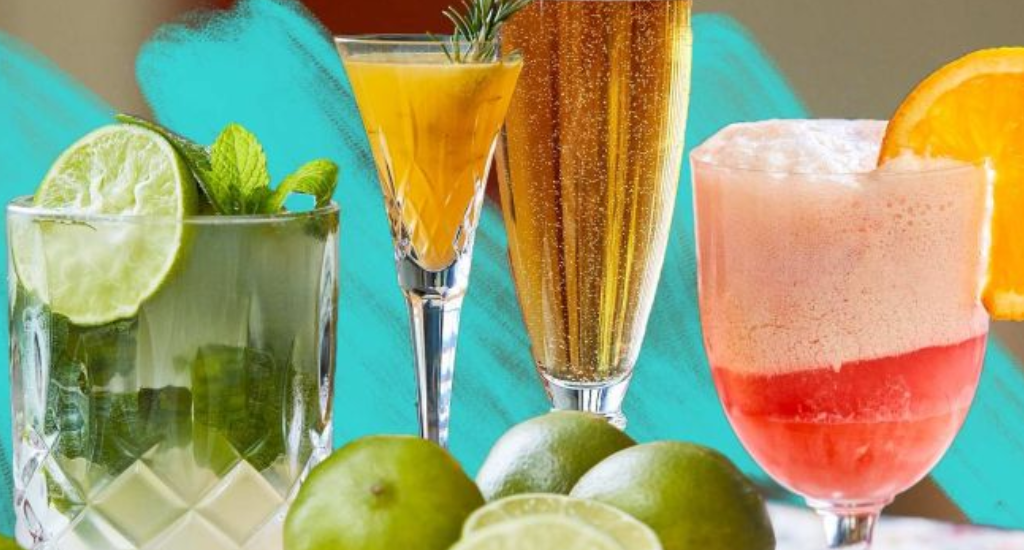
The global low-alcohol beverages market is estimated to expand at a robust CAGR of 5.3% over the analysis period. The market is anticipated to be valued at USD 1.41 billion in the year 2023 and is projected to reach a revised size of USD 2.36 billion by 2033.
According to the Future Market Insights historical analysis, the global low-alcohol beverages market expanded at a CAGR of 3.8% over the past 10 years. The growth in the low-alcohol beverages market is attributed to young people’s desire to adopt healthy drinking habits. The surging popularity of mindful drinking is predicted to fuel the growth of the low-alcohol beverage industry in the future.
Over recent years, people are becoming more aware of the increased knowledge of the harmful effects of high-alcohol beverages. A quick substitute for low-alcohol beverages is able to drive market growth significantly. Furthermore, there are several low-alcohol beverage flavors available to millennials that may boost market momentum as a result of a decline in alcoholic drink consumption. Furthermore, beverages with alcohol-by-volume (ABV) between 0.05% and 1.12% are classified as low-alcohol beverages. Low-alcohol drinks are expected to experience drastic growth owing to consumer preferences shifting towards healthier and more palatable drinks to maintain their health goals.
Key Takeaways
- The global population is rapidly becoming more health conscious and consumers are shifting towards healthy and nutritious food and beverage options. Traditional alcoholic beverages such as regular high-pressure beer, have been linked to a variety of health problems, including anemia, cancer, heart disease, depression, high blood pressure, and nerve damage.
- Attributing to this, several consumers are switching from traditional alcoholic beverages to light alcoholic beverages, which is considered a healthier option. Furthermore, it is gaining rapid traction for consumers to reduce their alcohol consumption over the long term through the consumption of light alcoholic beverages. These factors are expected to drive the growth of the market during the forecast period.
- Throughout the study period, the low-alcohol beverage industry is predicted to augment owing to the rising popularity of mindful drinking and a desire among young people to adopt healthy drinking habits.
- Throughout the study period, the market growth is anticipated to be fueled by a comprehensive understanding of high-alcohol beverages with detrimental effects and their quick substitution for low-alcohol beverages.
- Millennials are rapidly becoming less inclined to consume alcoholic drinks. They have replaced their demands with sparkling seltzers expected to increase the market momentum over the forecast period.
- A significant increase in glass-bottled cocktails has propelled a significant increase in the consumption of low-alcohol beverages. Furthermore, a robust increase in demand for low-alcohol beverage aperitif-style drinks, such as spritzes and sours, which are typically served in glass bottles.
- In various key regions, low-alcohol beers have taken up a substantial amount of shelf space in supermarkets and specialty stores, giving consumers more choices. Young adults are increasingly enjoying mocktails.
Competitive Landscape
Market players employ various strategies to enhance their presence in the market, including strategic alliances, partnerships, mergers, acquisitions, and geographical expansion.
Several prominent companies dominate this market, including Accolade Wines Australia Ltd., Allagash Brewing Co., Anheuser Busch InBev SA NV, Asahi Group Holdings Ltd, Bacardi Ltd., Beam Suntory Inc., Bells Brewery Inc., Carlsberg Breweries AS, CODYs Drinks International GmbH, Constellation Brands Inc., Curious Elixirs, Diageo Plc, Heineken NV, Kirin Holdings Co. Ltd., Molson Coors Beverage Co., and others.
More Insights into the Low-alcohol Beverages Market
The United States dominates the North American low-alcoholic beverages market accounting for a total share of around 54% in 2023 and is projected to continue exhibiting high demand. The United States low-alcohol beverages market is anticipated to augment at a CAGR of 2% over the assessment period.
The United States’ low-alcoholic beverages market is expected to surpass the size of 8.1 billion liters in 2023. In the United States, developed economies are prominent and advanced technologies and innovative manufacturing methods were adopted early.
Germany dominates the Europe low-alcohol beverages market, with a share of 30%. The German low-alcohol beverages market is estimated to grow at a CAGR of 1.8%.
Low-alcohol Beverages Market Segmentation by Category
By Type:
- Low-Alcohol Beer
- Low-Alcohol Spirits
- Low-Alcohol Wine
- Low-Alcohol RTD
- Low-Alcohol Ciders
By Distribution Channel:
- Hypermarkets/Supermarkets
- Convenience Stores
- Specialty Stores
- Online Retail
By Region:
- North America
- Latin America
- Europe
- The Middle East and Africa
- East Asia
About Future Market Insights (FMI)
Future Market Insights, Inc. (ESOMAR certified, recipient of the Stevie Award, and a member of the Greater New York Chamber of Commerce) offers profound insights into the driving factors that are boosting demand in the market. FMI stands as the leading global provider of market intelligence, advisory services, consulting, and events for the Packaging, Food and Beverage, Consumer Technology, Healthcare, Industrial, and Chemicals markets. With a vast team of over 400 analysts worldwide, FMI provides global, regional, and local expertise on diverse domains and industry trends across more than 110 countries.
Join us as we commemorate 10 years of delivering trusted market insights. Reflecting on a decade of achievements, we continue to lead with integrity, innovation, and expertise.
Contact FMI:
Future Market Insights Inc.
Christiana Corporate, 200 Continental Drive,
Suite 401, Newark, Delaware – 19713, USA
T: +1-347-918-3531
For Sales Enquiries: sales@futuremarketinsights.com
Website: https://www.futuremarketinsights.com
LinkedIn| Twitter| Blogs | YouTube




